Hello!
I have always wanted a perennial herb garden. I never had the space to put one. This year we will be putting in a herb garden at the Simongetti North. In this blog I will discuss which are the best perennial herbs for different zones, how to care for your herb garden, Backyard herb garden ideas and kitchen herb garden ideas.
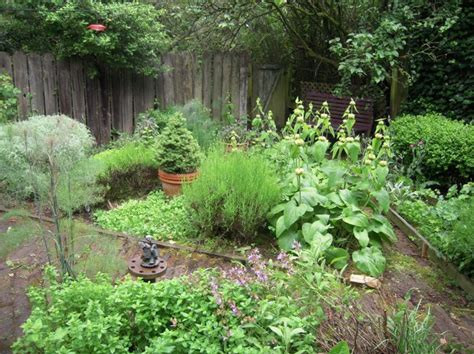
The Best Perennial Herbs for Various Zones
The Michigan hardiness zones are 3 through 6. Most of the state is predominantly Zone 5 and 6. Zone 3 is a small little spot in the Upper Peninsula. Since the zone temperatures vary in areas, they created Zone 3a, 3b, 4a, 4b, 5a 5b and 6a 6b. I actually live in 5a but kind of on the boarder of both.
The herbs I will be discussing in this blog is mostly zone 5 perennial herbs, unless I state it otherwise. Zone 5 perennial herbs can be used in zones up to 9. If you are in a higher zone you will want to find herbs for warmer climate. These herbs are for the cool northern climate.
Agrimony – Zone 6 thru 9 – this plant belongs to the rose family. It has spikes of sweet smelling, bright yellow blossoms. The Agrimony has been used in ancient times was used to treat insomnia, menstrual cycles, sore throat, cough, skin conditions, snake bites, and jaundice
Angelica – This herb is has the flavoring in some liquors, like gin and vermouth. The history of this herb has been used in teas, seasonings and for medicinal use. Angelica is a close relative to carrots and is a member of the parsley family. This plant has a short life for a perennial or biennial. Every 2 years needs to be replanted or reseeded.
Anise hyssop – Zone 4 thru 10 – Agastache, another name for Anise Hyssop, is part of the Hyssop family, and has a licorice flavor. This can be used to make tea, if you like licorice. Its leaves are simular to catnip. Agastache blooms with long spires that flower all season long, until the first frost. Can be used in a butterfly garden or a garden in the woodlands, as the deer and rabbits don’t like the flavor (I don’t blame them, LOL). This herb attracts butterflies, pollinators and hummingbirds.
Caraway – This is a biennial plant and takes some patience when growing it. The plant resembles a carrot top and doesn’t produce any seed, and grows to 8″ tall the first year. The second year it will triple in size and the foliage more feathery. Not many people grow this herb. It likes full sun and well drained soil. Sow seeds direct into soil.
Catnip – is part of the mint family. Growing catnip could be a cat magnet. If you have a cat at home or if you will be attracting the neighborhood cats. Besides cats liking cat nip, this can be used to make a soothing tea. Catnip can be invasive, so take precautions on keeping it back if you don’t want it to spread.
Chamomile (depending on variety) – Zone 3 thru 9 – Most people use this herb for a tea. It has been known to calm nerves, reduce anxiety and can act as a sedative. This herb has flowers like daisies. There are 2 different kinds of Chamomile; Roman Chamomile and German Chamomile. The Roman is the original Chamomile but Germain Chamomile is used the same way. This is a creeping grown cover and grows like a mat.
Chives – This is known to be one of the easiest herbs to grow. If you are just starting out, this might be a good one for you. Chives like a rich soil with lots of light. If the chive plant starts to flower, the flowers are edible and can be added to salad.
Clary Sage – is another herb used for medicinal use. Clary sage is an easy herb to grow and can be added as an ornament in your flower garden. The flowers and the leaves are used to flavor teas and aromatherapy. This plant can grow up to 4 feet tall. The flowers are spikes that are purplish blue in color. This herb is also deer resistant, which is good for us in the rural parts of the state.
Comfrey – Zone 3 thru 9 -This one I have never heard of. It is also been used for medicinal use since 400 BC, to stop heavy bleeding and treatment of bronchial conditions. It grows up to 4 feet tall. This herb prefers shade to part shade with some warm moist soil. This plant is easy to grow and generally drought and frost hardy.
Costmary – This herb tolerates hot summers and cold winters and grow to be 2 to 3 feet tall. Costmary does good in part shade but will bloom the best in full sunlight. This herb was known as the Bible plant, the leaves were used as bookmarks in the bible and was also used to keep parishioners wake during a lengthy sermon.
Echinacea -or otherwise known as purple cone flowers. These herbs attracts bees and butterflies with purple daisy like appearance. This could reach up to 5 feet tall and rarely bend or require staking to stand up. This is another simple plant for a beginner. They are drought resistant and can thrive in a dry summer.
Feverfew -This herb is a species of the chrysanthemum, that has been around for centuries grown in herb and medicinal gardens. Another name for this herb is bachelors button or feather foil. This herb is known for treating arthritis, headaches, as well as fevers. Feverfew only grows about 20 inches, much shorter than the other herbs we just talked about.
French tarragon -This herb is essential to any french cuisine. This has a sweet anise and licorice flavor. It grows 24 to 36 inches. French tarragon can be grown as a perennial or an annual depending on your climate. Don’t over water this plant, likes dryness between watering.
Garlic Chives – Zone 3 on up -These look like an onion chive but taste like garlic. The Chinese have been record to use this plant 4,000 to 5,000 years ago. Garlic chives have a nice flower, can be planted on a path or dense ground area. The flowers can be eaten fresh or dried, can be used in flower arrangements, This herb has culinary uses as herbal vinegar, soups, soft cheeses, salads, butter and grilled meat.
Horseradish – My dad used to grow horseradish and enjoy it with a good juicy roast. This comes as a root cutting and plant in early spring, dig a hole and get it in the ground. Bury it deep enough for the root to stand up. Horseradish is very easy to grow, it does best when ignored. Once established it’s there for life.
Hyssop -This plant likes well drained soil and on the dry side. It has spiky flowers of pink, red and blue that attract the pollinators to the garden. This plant has been known to be in the flower garden as well as a herb garden. Hyssop likes either full sun or partial shade.
Lavender (depending variety) – Once this plant is established it needs very little water and extremely drought tolerant. In the beginning they need to be watered regularly. This one is popular for its lavender fragrance. This herb requires regular pruning to encourage new growth and keep it looking nice.
Lemon Balm – Some people are not sure what to do with lemon balm, it was either gifted to them or in a plant swap. Lemon balm is part of the mint family and has a lemon smell with white flowers. Another easy plant to grow for the beginner. It likes part shade to full sine but flower best in full sun. This herb can be used to make tea, potpourris and an insect repellent.
Lovage – Zone 4 on up – This herb resembles parsley and can be used where parsley or celery are needed. This little herb has a high salt content so only a little depending on how much salt you like. Believe it or not, this herb is used for flavorings used for confectioneries. The seeds and stems can be used for making candy. The seeds are used in flavored vinegar and oils. This herb looks like celery but is actually in the carrot family and can grow up to 6 feet tall. This whole plant can be eaten. In the fall you can dig up the roots and eat them as well. Good companion plant to other tuber plants and potatoes.
Marjoram -This easy to grow herb is good for growing in a container or garden. Marjoram like full sun with well drained soil, in the northern climate it will be an annual unless you plant in a container and treat as a houseplant. Marjoram is fragrant in the garden or kitchen, and attracts butterflies. This make a great houseplant for beginners.
Mint Hybrids (chocolate mint, apple mint, orange mint, pineapple mint and others) – there are tons of varieties of mint and they are all great. They are mostly used for flavoring food or as a garnish. All mint can be grown from seed except for peppermint. They don’t produce any seeds so you need to get a root cutting from an established plant. Mints like full sun to partial shade. The leaves can be harvested after flowering has begun.
Oregano (depending variety) – Oregano is commonly used in Italian dishes. growing this herb is easy too. It grows approximately 6 inches tall, likes full sun and well-drained soil. If using this herb for the kitchen, for best flavor, pinch the flower buds as they begin to bloom.
Parsley (depending variety) -This herb is rich in vitamins and minerals, and is used as garnish, added to soups and other culinary dishes. There are many different kinds of parsley; Curly (common) Parsley, Flat-Leaf Parsley (other known as Italian Parsley), Hamburg Parsley and Japanese Parsley. Which Parsley do you like? Leave a comment in the post below.
Peppermint – is a hybrid between water mint and spearmint, it was an experiment near London England in 1750. Peppermint is a little more temperamental plant. This plant prefers full sun to increase the potency of its oils and medicinal qualities. To take good care of the peppermint plant, it needs a new location about every 3 to 4 years. Otherwise it will get weak and spindly if in the same place too long. Peppermint is used for digestion issues, cold and flu, blood pressure and type II diabetes. On the other hand, peppermint can make gallstone worse, never give to an infant or toddler can cause breathing spasms, no studies about using peppermint while pregnant and never use peppermint with an immunosuppressant.
Rue – This is an old-fashioned herb and was grown for medicinal reasons. This plant is rarely grown now. This herb is a good companion plant, it has a strong smell to repel many creatures, including cats, dogs and Japanese beetles. With the flowers it produces, it makes a great cut flower too, with its yellow blossoms. Rue plants grow 2 to 3 feet tall. This plant needs full sun to do well.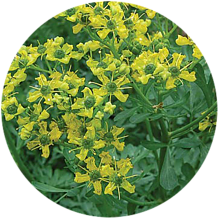
Salad Burnet – This herb is a member of the rose family. Salad Burnet can be used in vinegar and sauces, it is also used for medicinal and old cosmetics. It likes sunny to partly shade locations. This starts from seed really easily, just sprinkle the seed in the garden of where you want to plant and cover lightly with a dusting of sand. Moderate watering and it grows fast and easy.
Sorrel – This herb has a tangy lemon flavor and is used in french cuisine. It’s not used much in the USA. It grows up to 2 feet tall with a whorled purple flower. Sorrel is a lot like lettuce and greens, cut what you need and more will grow back. The small leaves have an acidic tang and the larger leaves have a mellow flavor.
Spearmint -One of the mint family members. Spearmint resembles the looks of peppermint, but spearmint have bright green pointed leaves with lavender flowers like spikes and grow to 4 inches. This plant will grow to 12 to 24 inches and grows just like the rest of the mints.
Sweet Cicely – Zone 3 thru 7 – this herb has fern-like foliage with tiny white flower clusters, with an anise fragrance. This has been used to treat stomach aches and coughs. This herb is also a zero-calorie sugar replacement. It can be added to salad, soups and cooked like spinach. Sweet Cicely is nectar rich and very valuable to bees and other pollinators. Performs best in sun or partly shaded. These seeds get planted in the ground in the fall and germinate followed with warm temperatures in the spring.
Thyme (depending variety) –Zone 5 thru 9 – Thyme prefers full sun and well drained soil. It doesn’t like hot, humid or wet conditions. We all are familiar with its use with cooking but the essential oils from these herbs are used in soaps, lotions and candles and can be dried and put in sachets. There are many types of thyme plants. What kind do you use? Leave a comment in the post below.
How to Care for your Herb Garden
A lot of these herbs are easy to care for. If you think about it, it is a weed after all. The majority them are invasive as well. So you will want to think carefully on how you want to plant these. You can plant invasive species in containers and have them on your patio or you can dig a huge whole and submerge a big pot in the dirt and then it won’t spread. Most of these plants once they are established they just need occasional watering. Herbs don’t need to be fertilized. It is recommended not to, because it can weaken flavor of the plant. 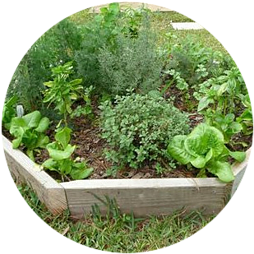
Backyard Herb Garden Ideas
The sky is the limit on what you can do with herbs in your backyard no matter which zone you live in. Because most of these herbs are invasive, if you want to plant them in the ground but don’t want them everywhere, they place big planters in the ground to keep them from spreading. You can find an old wagon and make a herb garden out of it. If you have space you could do like a cottage garden but with herbs.
If you don’t have space for a garden you can have a wooded wall garden on your patio or balcony. Any type of containers big or small, and tower gardens, it just depends on how big you want your plants to be.
Kitchen Herb Garden Ideas
Having a kitchen herb garden you can use the metal farmhouse containers and decorate with old-fashioned plates or cups and saucers. The kitchen garden can be indoors as well, there are lots of ideas and cute containers, just set them in your windowsill in your kitchen or use a smart garden that has the light and water. You can hang planters with hangers.
Anyone with a kitchen herb garden? leave comment below 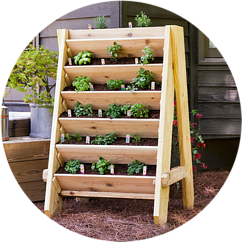
Happy Planting!
I know this was a really long post but there is a lot of information regarding the different herbs for my gardening zone. Some of these herbs I never heard of before until now. Now you have an idea of how to grow herbs, the different kinds for zone 5 and higher, with some starting as low as zone 3 and ideas for a backyard herb garden and kitchen herb garden.
Do you have a herb garden? What kind? Leave a comment below!
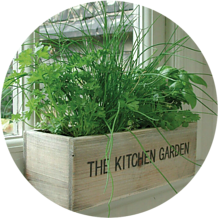
Interested in greenhouse solutions? Check out my Review – Backyard Greenhouse Kits – By Clicking This Link Now!
If you are looking for an indoor gardening solution, check out my Smart Garden Review – By Clinking This Link Now!
Cheer!
Chris

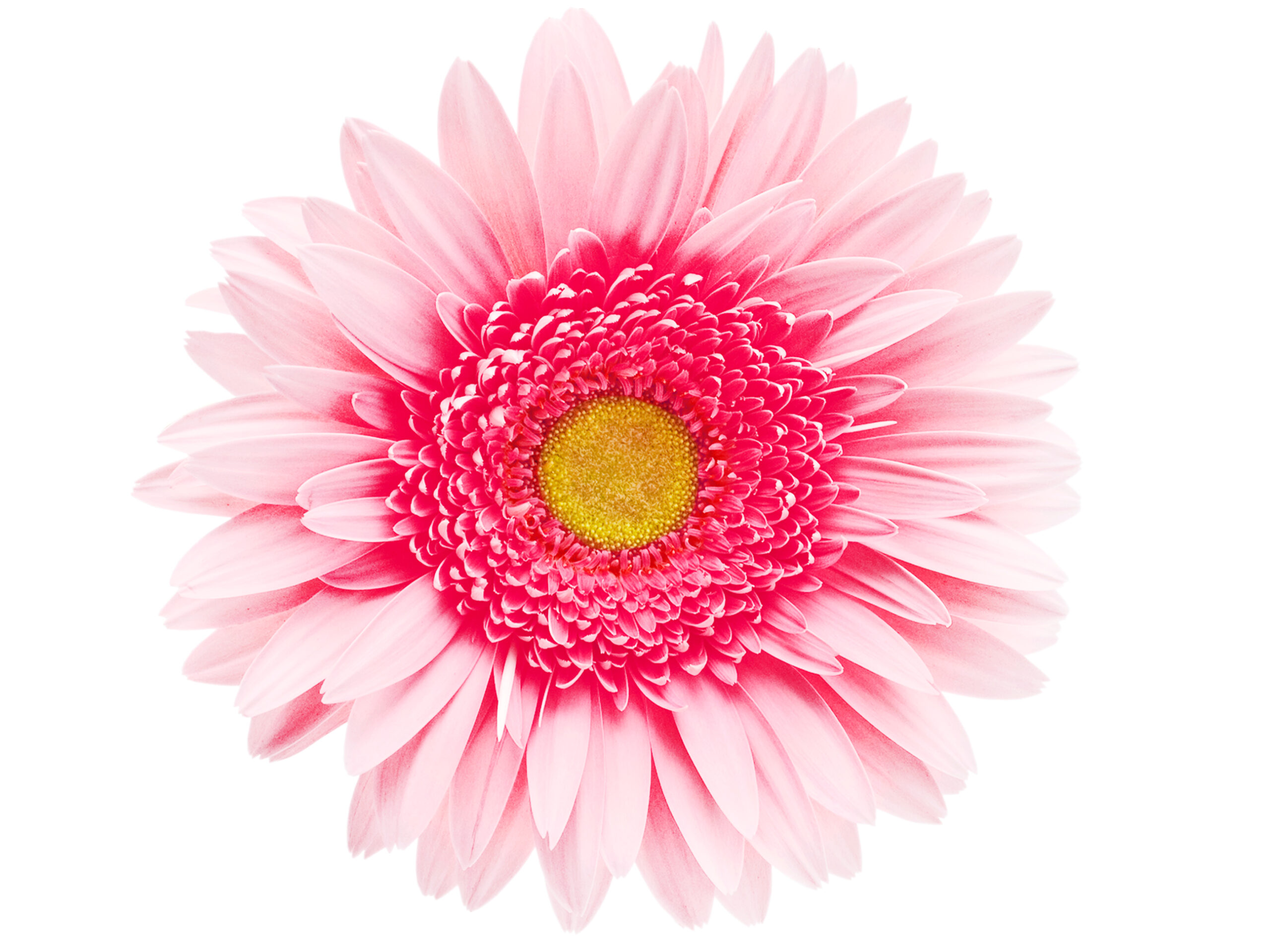

I have never planted herbs but I’ve always been interested in this process. Whether it is gardening or planting herbs, I’ve always had the interest to go all-natural. It is best for healing, starting your own, and deviating from the pesticides and preservatives that plague everyday life, food, and people.
That said, I love how you clearly outline the different herbs, how to plant them, and what to keep in mind in the process. Your images are also very resonant and content-enriching. Overall, I like how your article gave me a new, refreshed perspective on how to effectively start our perennial herb garden as well as the unique types.
Thank you, I am glad this is helping with ideas to freshen up your herb garden. I am going to make a designated herb garden this year. I plan on using all organic for my veggies and herbs. Look for more tips in the future!
I seriously love your website! I have searched through it a little bit, you have probably seen my comments around here. I really appreciate all this information. It is very instructional and useful for my roommate tonight. I bookmarked a few of your articles now but I will just be bookmarking your entire site because it is very useful
Thank you for the kind words! I look forward to providing more gardening information. I am so excited for spring to get here.
Create a Perennial Herb Garden- Having you own garden is amazing, being able to get all or majority of your ingridients is a privillage.Having perennial garden is easy, you plant it once care for it and it keep coming back. I planted dill one and it keeps coming back. Thank you for sharing your article
Thank you for your comment. I love having fresh herbs on hand
Hi, I’ve gone through this wonderful article about creating perennial herb garden. This piece of writing is very informative and educative especially for some people like me who didn’t know the best perennial herbs and how to care for your backyard herb garden. In my opinion, this is the best article describing the best perennial herbs for various zones. Thanks once again for sharing this helpful information.
Thank you for your comments and please stop by for more gardening tips
At home, I have one small herb corner where I grow herbs that we also use (thyme, sage, two different types of mint, parsley, oregano, chamomile). If I had more space, I would let my imagination run wild and definitely add even more types of herbs from your great list. For some, I have not heard also or did not know that they are classified as herbs. Thanks for this description of individual species, very useful information.
I also like different ideas on how to grow herbs indoors.
I wish you all the best
Nina
Hi Nina,
Thank you for your comment. There are more herbs out there than people think. Stop back for more gardening tips!
Hi Chris, and thanks for writing about how to “Create a Perennial Herb Garden”. I don’t have one, but would love to especially after reading your post. I don’t currently have the room and plan to move in the next 3-4 months. Hopefully, I can find a location that would make planting an herb garden possible. Is there some sort of guide or website that tells you what zone you live in? I think being able to grow your own herbs is a great idea. Certainly can’t get any fresher.
Cheers,
David
Hi David,
Thank you for your comment. Check out my post https://simongettinorth.com/ga…regarding gardening zones. Also if you wanted an indoor option for now you can check out the Smart Garden that can get you fresh herb in your transitioning to a new home. Let me know if there is anything else I can help with! Stop by for more gardening tips!